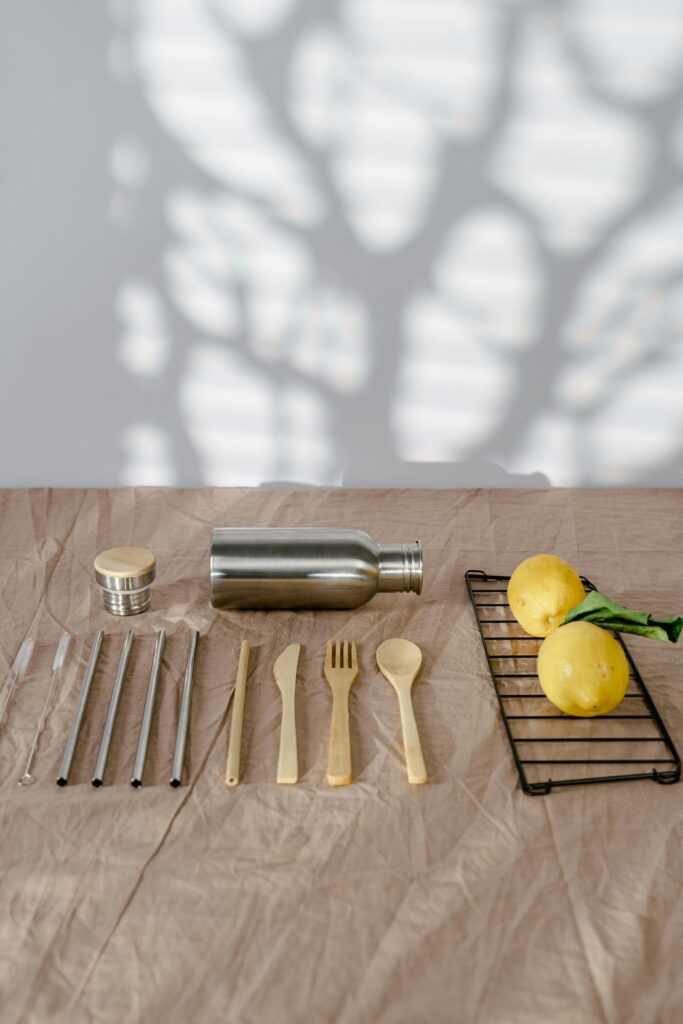Sustainable Living & Lifestyle
Zero Waste Lifestyle: A Complete Guide to Sustainable Living
Introduction
The world is generating waste at an unsustainable pace, and our landfills, oceans, and ecosystems are paying the price. Plastic pollution, food waste, and overconsumption are major contributors to climate change and environmental degradation. One effective solution that individuals and communities are adopting worldwide is the zero waste lifestyle.
The zero waste lifestyle is not about perfection or producing absolutely no trash. Instead, it’s about making conscious choices to reduce waste, reuse what we already have, and recycle responsibly. By following this approach, anyone can live more sustainably, save money, and help build a cleaner future.
What is Zero Waste Lifestyle?
The zero waste lifestyle is a way of living that aims to minimize trash sent to landfills or incinerators. It focuses on creating a circular economy where resources are used efficiently and continuously rather than being thrown away.
The lifestyle is based on the 5Rs principle:
- Refuse what you don’t need.
- Reduce what you do need.
- Reuse items as much as possible.
- Recycle materials that cannot be reused.
- Rot (compost) organic waste.
Why Zero Waste Lifestyle Matters
Environmental Benefits
- Reduces pollution in oceans and landfills.
- Cuts greenhouse gas emissions from waste burning.
- Preserves forests, water, and natural resources.
Economic Benefits
- Saves money by reusing items instead of buying new ones.
- Encourages eco-friendly businesses and sustainable innovation.
- Reduces government spending on waste management.
Health Benefits
- Limits exposure to toxic chemicals in plastics.
- Promotes fresher, unpackaged food choices.
- Improves overall air and water quality.
How to Start a Zero Waste Lifestyle
1. Conduct a Waste Audit
Look at your trash for a week. Identify your biggest waste sources—plastic bottles, food packaging, or disposables. This helps you know where to start.

2. Replace Single-Use Items with Reusables
- Stainless steel water bottle instead of plastic bottles.
- Cloth shopping bags instead of plastic bags.
- Bamboo toothbrush instead of plastic ones.
- Reusable food containers instead of takeaway packaging.
3. Shop Smart and Package-Free
- Buy food in bulk using your own containers.
- Support farmers’ markets with unpackaged produce.
- Choose glass, paper, or metal packaging over plastic.
4. Compost Organic Waste
Food scraps and yard waste can be composted to make nutrient-rich soil instead of ending up in landfills.
5. Embrace Minimalism
Before making a purchase, ask yourself: Do I really need this? Minimalism supports the zero waste lifestyle by reducing clutter and consumption.
Zero Waste Lifestyle in Daily Life
Kitchen
- Store dry foods in glass jars.
- Use beeswax wraps instead of plastic cling film.
- Avoid processed foods with heavy packaging.
Bathroom
- Choose bar soaps and shampoo bars.
- Switch to bamboo toothbrushes.
- Use reusable makeup pads.
Workplace
- Go digital to reduce paper waste.
- Carry a reusable lunchbox and coffee cup.
- Use refillable pens instead of disposable ones.
Travel and On-the-Go
- Carry a “zero waste kit” (water bottle, napkin, cutlery, tote bag).
- Refuse straws and single-use plastic cutlery.
- Prefer cycling, walking, or eco-friendly transport.
Challenges of Zero Waste Lifestyle
While effective, adopting a zero waste lifestyle can be challenging:
- Limited access to bulk or package-free stores.
- Higher upfront cost of reusable items.
- Social inconvenience in saying no to disposables.
The solution is to focus on progress, not perfection. Even small changes matter.
Myths About Zero Waste Lifestyle
- Myth 1: It’s Expensive – Reusable items save money in the long run.
- Myth 2: It’s Too Difficult – Small, consistent swaps make it manageable.
- Myth 3: One Person Can’t Make a Difference – Millions of small actions create global change.
Global Success Stories of Zero Waste Lifestyle
- San Francisco, USA – Aims for 100% waste diversion with recycling programs.
- Kamikatsu, Japan – Residents sort waste into 45 categories for reuse and recycling.
- Sweden – Converts waste into renewable energy, minimizing landfill usage.
These examples prove that a zero waste lifestyle is achievable on both individual and community levels.
Tips to Stay Motivated
- Start with one area like the kitchen or bathroom.
- Join zero waste communities online.
- Set small monthly goals for reducing waste.
- Celebrate your progress and inspire others.
Conclusion
The zero waste lifestyle is more than a trend—it’s a movement toward a healthier, cleaner, and more sustainable planet. By refusing unnecessary items, reducing waste, reusing resources, recycling effectively, and composting, you can live in harmony with nature.
You don’t have to be perfect to make a difference. Each small step toward a zero waste lifestyle contributes to protecting the planet for future generations.
FAQs About Zero Waste Lifestyle
Q1: Can I adopt a zero waste lifestyle on a budget?
Yes. Start with what you already have and make gradual swaps.
Q2: Does zero waste mean no trash at all?
No, it means reducing waste as much as possible.
Q3: What’s the simplest zero waste swap?
Carrying a reusable water bottle and shopping bag.
Q4: How does zero waste save money?
You buy fewer disposables and reuse items over time.
Q5: Is zero waste realistic for busy people?
Yes, most swaps (like reusable coffee cups) fit easily into daily life.